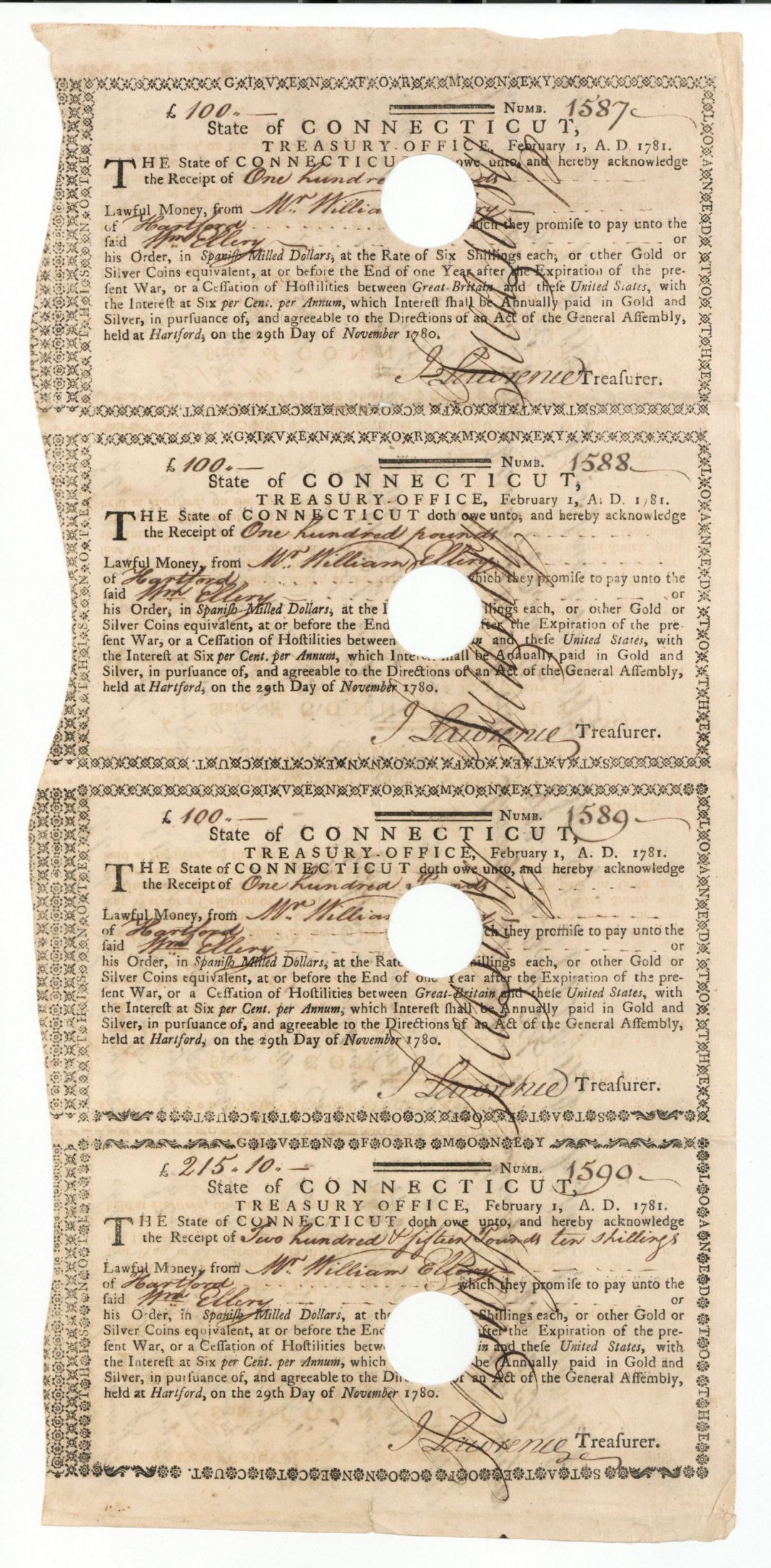Uncut Sheet of 4 Receipts of Lawful Money - Connecticut - American Revolutionary War
Inv# CT1125Uncut Sheet of 4 Receipts from the State of Connecticut for lawful money received. Relating to the Declaration of Independence, support for independence was boosted by Thomas Paine's pamphlet Common Sense, which was published January 10, 1776 and argued for American self-government and was widely reprinted. To draft the Declaration of Independence, the Second Continental Congress appointed the Committee of Five, consisting of Thomas Jefferson, John Adams, Benjamin Franklin, Roger Sherman, and Robert Livingston. The Declaration was written almost exclusively by Jefferson, who devoted himself to it from June 11 to June 28, 1776, in a three-story residence at 700 Market Street in Philadelphia.
Identifying inhabitants of the Thirteen Colonies as "one people", the Declaration simultaneously dissolved political links with Britain, while including a long list of alleged violations of "English rights" committed by George III. This is also one of the foremost times that the colonies were referred to as "United States", rather than the more common United Colonies.
On July 2, Congress voted for independence and published the declaration on July 4, which Washington read to his troops in New York City on July 9. At this point, the Revolution ceased to be an internal dispute over trade and tax policies and had evolved into a civil war, since each state represented in Congress was engaged in a struggle with Britain, but also split between American Patriots and American Loyalists. Patriots generally supported independence from Britain and a new national union in Congress, while Loyalists remained faithful to British rule. Estimates of numbers vary, one suggestion being the population as a whole was split evenly between committed Patriots, committed Loyalists and those who were indifferent. Others calculate the split as 40% Patriot, 40% neutral, 20% Loyalist, but with considerable regional variations.
At the onset of the war, the Second Continental Congress realized defeating Britain required foreign alliances and intelligence-gathering. The Committee of Secret Correspondence was formed for "the sole purpose of corresponding with our friends in Great Britain and other parts of the world". From 1775 to 1776, the committee shared information and built alliances through secret correspondence, as well as employing secret agents in Europe to gather intelligence, conduct undercover operations, analyze foreign publications, and initiate Patriot propaganda campaigns. Paine served as secretary, while Benjamin Franklin and Silas Deane, sent to France to recruit military engineers, were instrumental in securing French aid in Paris. Read more at https://en.wikipedia.org/wiki/American_Revolutionary_War










Ebay ID: labarre_galleries